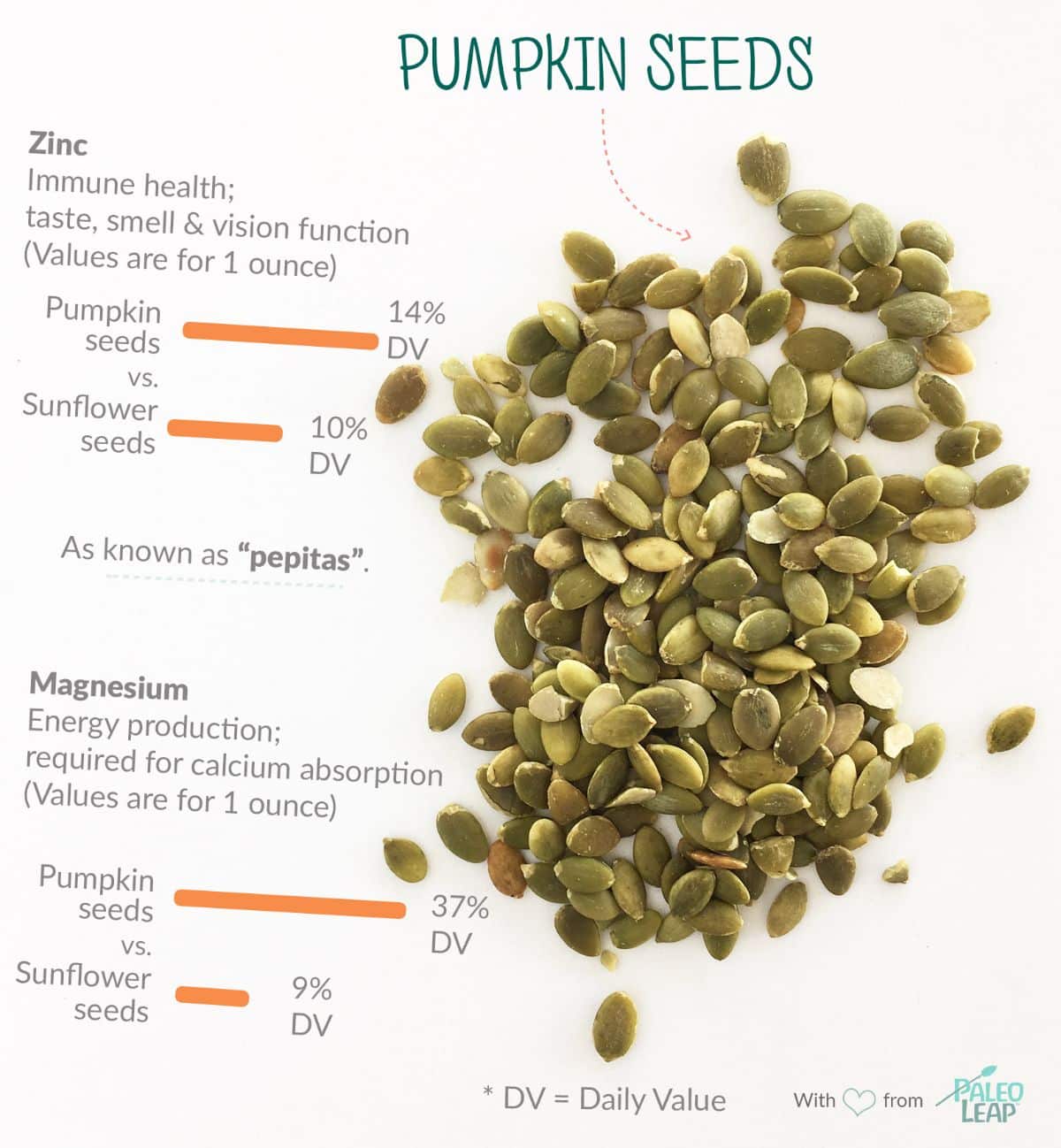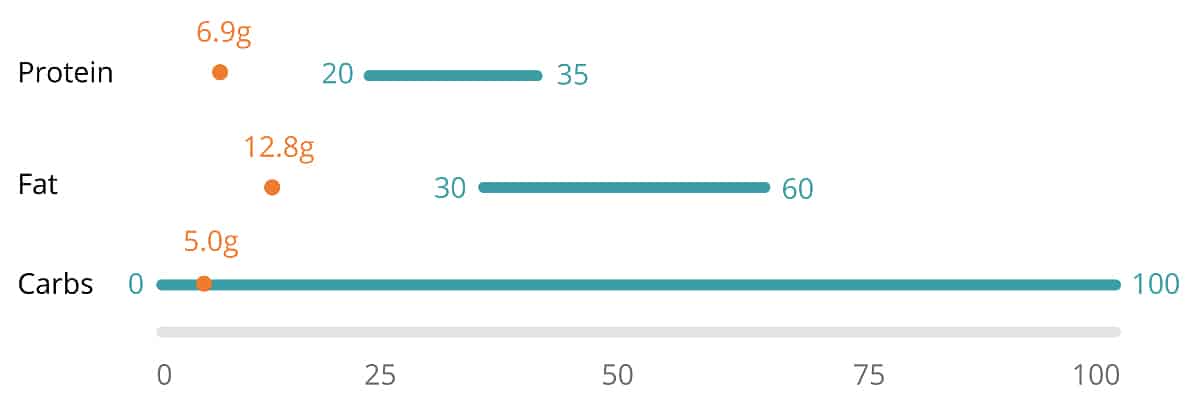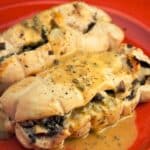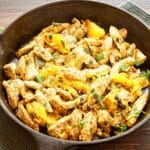
Pumpkin seeds may be small, but they are packed with nutrients and quality fats!
Pumpkin seeds — also called pepitas — are flat, oval and green in color. The term "pepita" is derived from Mexico and means "little seed of squash".
Pumpkin seeds are notably plucked from pumpkins as a Halloween tradition, then roasted for a nutrient-rich and delicious snack. Because these seeds contain fragile omega-6 fats, if you choose to roast them, it's best to roast them quickly -- under 20 minutes -- then store in an airtight container in a cool, dark location.
These seeds are packed with nutrients like magnesium, zinc, manganese and phosphorous.
Nutrition Details
 Macros in Context
Macros in Context
Here's how 1 ounce of pumpkin seeds stacks up in the context of a typical Paleo meal:
Blue bars show the typical range in grams for a Paleo meal. For example, a Paleo meal usually includes 30-60 grams of fat, but where you personally fall in that range will depend on your preference.
Orange dots show how 1 ounce of pumpkin seeds fit into the typical nutrient profile of a Paleo meal.

 Buy It
Buy It
Purchase raw (and preferably organic) pumpkin seeds in prepackaged containers or bulk bins. A benefit to buying raw pumpkin seeds is the ability to control the roasting temperature.
- GREEN OR WHITE: Some pumpkin seeds are encased in a hard white shell, however most stores sell the shelled, green variety.
- RAW OR ROASTED: Pumpkin seeds can be eaten either raw or roasted. Roasting brings out a nutty, rich flavor with a bit of crunch.
 Cook It
Cook It
SOUPS
Chop and sprinkle over soup to add crunch.
SMOOTHIE
Add pumpkin seeds to a smoothie.
VEGETABLES
Toss whole or finely chopped pumpkin seeds on top of sautéed vegetables or a salad.
DRESSING
Grind pumpkin seeds and mix with olive oil, lemon and herbs to make a salad dressing.
 Recipe Ideas
Recipe Ideas

Green Salad With Clementine Dressing

Spicy pumpkin seeds






Leave a Reply